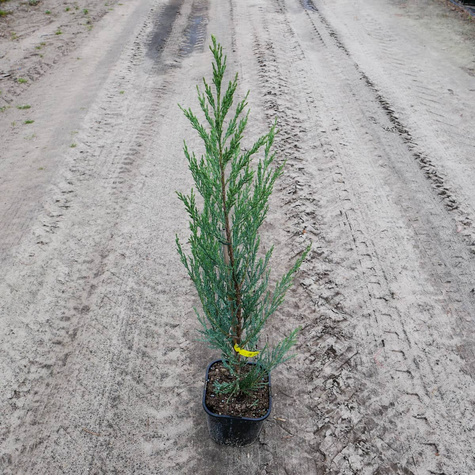

suggest for the cultivation of savin juniper ( Juniperus sabina L.) in containers the substrate composed of high moor peat with pH 5.5 6.0 or the mixture of peat, bark and hotbed substrate in volume ratio 3:3:4 with pH 7.2. Īt present the information in literature about the recommendations for the pH of growing substrate in gymnospermous plants container cultivation are scarce. It is suggested for planting in rock gardens, on moorlands, in container compositions, for hedges etc. The variety possesses a very narrow, compact, columnar shape of crown, intensive blue colour of scales, is more resistant to dying out of shoots caused by the fungus Phomopsis juniperovora and grows slower than the variety Skyrocket. Many cultivars have been created, differing not only in a shape of crown but also in the length or the colour of needles or scales (scale-like leaves) as well as in the requirements of soils and habitat.Ī novelty of the Polish market, gaining bigger and growing appreciation is the variety of Rocky Mountain juniper ∛lue Arrow found by Tesselar in Ontario, Canada in 1980. Junipers are known to people as extremely sun-loving plants, however not possessing high habitat requirements. Rocky Mountain juniper, Juniperus scopulorum Sarg., ‘Blue Arrow’, growing substrate pH, container cultivation. Before and after completion of the experiment, chemical analysis of the cultivation substrate was performed for each combination to estimate the content of m When the experiment was completed, fresh root weight and the weight of fresh above-ground part of plants were measured. Also the pH of cultivation substrate was measured. the height of plants and length of lateral shoots were measured and the number of lateral shoots was counted. During vegetation season biometric measurements were performed i.e. In order to obtain substrate pH in H 2O 7.2 20% mineral soil was added to pine bark (40%) and high moor peat (40%).

The plants were cultivated in a substrate composed of a mixture of high moor peat and frittered, composted pine bark in volume ratio 1:1, with a different substrate pH in H 2O: 4.5 5.0 5.5 6.0 6.5.

It prefers average to slightly acidic and sandy well-drained soil and it loves mulching.The experiment on cultivation of the Rocky Mountain juniper ∛lue Arrow variety in containers was conducted in years 2000-2002 in an unheated glasshouse.
#Juniper blue arrow vs skyrocket full#
They are perfect for our climate zone and thrive best in the full sun, but will tolerate shade (it will just grow slower). That’s the beauty of this plant – you can plant them small and they will grow fast at the rate of 10-12” a year reaching mature height of 15-20” and with 2-3”. They look the same, but much, much taller than the babies we planted. After five years, I checked today and I didn’t noticed any distinction between the two, no differences to speak of whatsoever. We at Landpol have grown specimens that were labeled as both Skyrocket, as well as Blue Arrow within close proximity to one another. A variety of it is sometimes Blue Arrow Juniper. It is the tallest, narrowest juniper out there and one of the fastest growing. Its short, compact, silvery blue foliage is evergreen with virtually no change from season to season. It can be planted as a cluster against a large fence or building for a very striking, dramatic effect or it can be used in formal planting. This plant has a tall and extremely narrow, columnar growth habit. If you are looking for a fast growing elegant plant around long entryways or even just to hide the neigbour’s shed that hurts your eyes, Skyrocket Juniper is your answer to these problems.


 0 kommentar(er)
0 kommentar(er)
